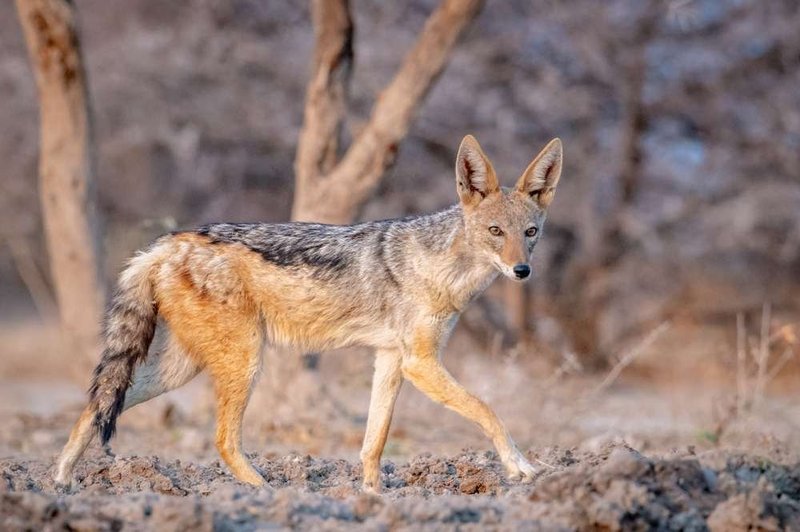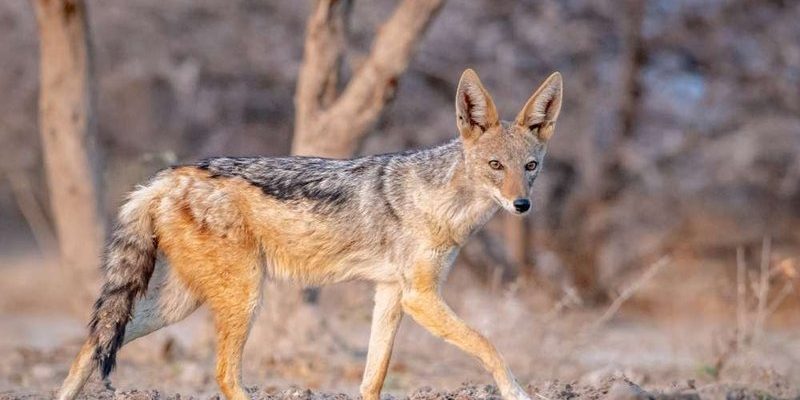
Honestly, it’s a good idea to know how to react. Think of it as being prepared for a surprise encounter with an exotic animal. You wouldn’t approach a wild lion, right? Similarly, understanding how to handle a side-striped jackal can help keep both you and the animal safe. Let’s unpack this a bit and explore what actions to take, whether you’re hiking or on a safari.
Recognize the Side-Striped Jackal
Before you dive into what to do, it’s helpful to know what you’re looking at. The side-striped jackal is distinct with its striped fur, which gives it a unique appearance. These animals are often considered medium-sized canids, similar to a dog, with longer legs and a more slender build. They usually have a sandy or greyish coat with a notable stripe running along their sides.
You might notice that these jackals are quite social. They often travel in small family groups, so if you see one, there might be more nearby. Understanding their behaviour is key. For instance, if they appear relaxed and are going about their business, they likely don’t see you as a threat. But if they seem agitated or defensive, that’s a sign to be cautious.
Take a moment to appreciate their role in the ecosystem as scavengers and hunters. They help keep populations of small mammals in check and can also be beneficial for the environment by cleaning up carcasses.
Remain Calm and Assess the Situation
So, you’ve spotted a side-striped jackal. The first step is to stay calm. Animals can pick up on our energy, so panicking won’t help anyone. Assess your surroundings carefully before making any moves.
Ask yourself a few questions. How close is the jackal? Is it alone or with others? Understanding this will help you gauge the situation. If the jackal is far away, it’s best to just enjoy the moment and watch from a distance. But if it’s approaching, it’s time to think about how to react.
Remember, jackals are generally not aggressive unless they feel cornered. If you’re close enough that the jackal seems interested in you, stand your ground. Make sure you’re not blocking its escape route, and avoid making direct eye contact, which might be perceived as a challenge.
Know When to Back Away
Sometimes the best thing to do is to create space. If the jackal shows signs of aggression—like growling or baring its teeth—back away slowly and carefully. Quick movements could startle it, so go easy. Keeping your body sideways to the animal can be less threatening.
It’s crucial to remember that you’re in their territory. You’re a guest in their world, so showing them respect is key. If you can safely retreat without turning your back, do so calmly.
If you’re in a group, make sure to stay together. There’s safety in numbers, and jackals are more likely to feel threatened by a larger group. Use a calm voice to reassure those around you as you edge away.
Carry Deterrents
If you find yourself in areas known for wildlife encounters, it’s wise to come prepared. Consider carrying items that can help deter animals. Commonly recommended items include:
- Noise-makers: A whistle or a bell can scare off curious wildlife.
- Bear spray: Though it’s designed for bears, it can deter other wildlife as well.
- Stick: Not for hitting, but you can use it to make noise or redirect an animal if needed.
Of course, bringing these items doesn’t mean you’ll need to use them. The goal is always to avoid confrontation. If you’re in a national park, be aware that rangers often provide guidelines on what to carry based on local wildlife.
Understand Their Diet and Behaviour
Understanding what side-striped jackals eat can also help in knowing how to react. These jackals are omnivores, which means they consume a mix of small mammals, birds, insects, and even fruits. This diverse diet helps them adapt to various habitats.
Knowing this, it’s clear that they’re likely on the hunt for a meal rather than looking for trouble with humans. They’re typically more interested in scavenging than actively seeking out encounters with people.
If you happen to see one digging or scavenging, chances are you’re not in immediate danger, but keep your distance. You don’t want to alarm them or disrupt their search for food, which could lead to defensive behavior.
Share Your Experience and Educate Others
If you encounter a side-striped jackal, consider sharing your experience! Whether through social media, blogging, or chatting with friends, there’s value in educating others on the importance of respecting wildlife.
You could highlight how fascinating these animals are and share safety tips, too. People are often intrigued by wild encounters, and your story might inspire someone to learn more about wildlife conservation or to be more prepared for future encounters.
Remember that every narrative adds to the collective understanding of how we should interact with wildlife. Whether it’s through photos, videos, or simple conversations, your experience can inspire empathy and knowledge about nature and the creatures we share it with.
Running into a side-striped jackal in the wild can be an exhilarating experience. By understanding their behavior, knowing when to back away, and being prepared with deterrents, you can ensure a safe encounter for both you and the jackal.
Next time you’re out in nature, remember that these fascinating creatures are a vital part of their ecosystem. Enjoy the moment, respect their space, and perhaps share your story with others. After all, each encounter teaches us how to coexist harmoniously with the wild!

